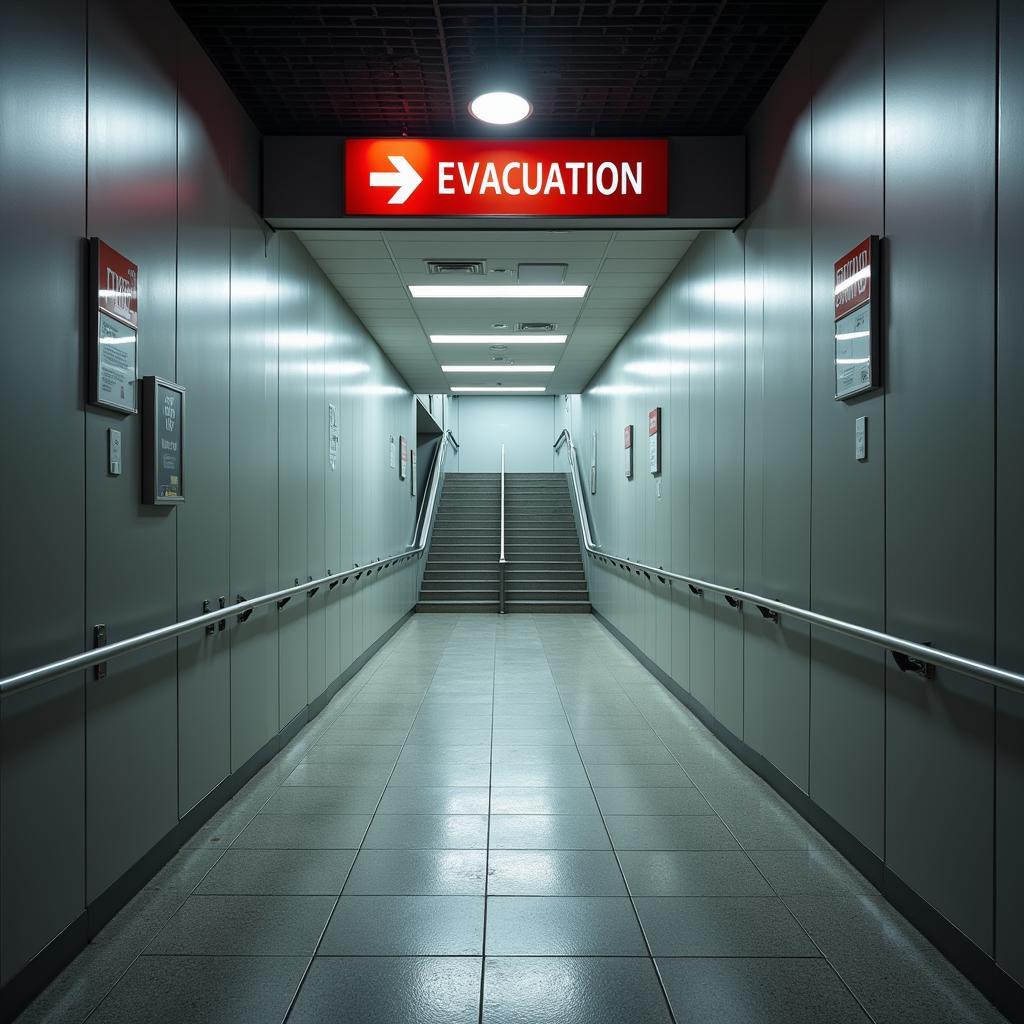The sign “In Case of Fire Do Not Use Elevators” is ubiquitous in buildings worldwide. But have you ever stopped to consider why this seemingly simple instruction is so critical for your safety during a fire emergency? This article delves into the reasoning behind this universal safety measure, exploring the potential dangers of using elevators during a fire and providing alternative evacuation strategies.
 Fire Elevator Sign Prompt
Fire Elevator Sign Prompt
Why Elevators Are Dangerous During a Fire
While elevators seem like a quick and effortless way to exit a building, they pose significant risks during a fire:
- Power Outage: Fires often cause power outages. If the power fails while you’re in an elevator, you could become trapped inside.
- Smoke Inhalation: Elevator shafts can act like chimneys, quickly filling with smoke and toxic fumes. Inhaling these fumes can lead to disorientation, unconsciousness, and even death.
- Heat Exposure: Elevators can become extremely hot due to their proximity to electrical wiring and the fire itself. The intense heat can cause burns and hinder your ability to escape.
- Unpredictable Movement: Fire can damage elevator control systems, leading to unpredictable movement. The elevator might stop at the wrong floor, potentially exposing you to greater danger.
Safer Evacuation Alternatives
Instead of relying on elevators, familiarize yourself with these safer evacuation routes:
- Stairwells: Stairwells are specifically designed as fire escapes, offering a protected path down and out of the building.
- Fire Escape Routes: Many buildings have designated fire escape routes, often marked with illuminated signs. Follow these routes carefully.
- Emergency Exits: Locate the nearest emergency exit on your floor and be prepared to use it in case of a fire.
 Building Evacuation Stairwell
Building Evacuation Stairwell
What to Do in Case of Fire
- Stay Calm: Panic can lead to poor decision-making. Take a deep breath and try to remain calm.
- Activate the Fire Alarm: If you discover a fire, activate the nearest fire alarm to alert others in the building.
- Evacuate Immediately: Do not attempt to fight the fire yourself unless you are trained to do so.
- Use Designated Exits: Follow the designated fire escape routes or use the nearest stairwell or emergency exit.
- Crawl Low if Smoke is Present: If you encounter smoke, crawl low to the ground to avoid inhaling toxic fumes.
- Once Outside, Stay Out: Do not re-enter the building for any reason. Wait for instructions from firefighters.
Conclusion
The “In Case of Fire Do Not Use Elevators” sign is not merely a suggestion; it’s a crucial safety directive. Elevators can transform into deathtraps during a fire, putting your life at risk. By understanding the dangers associated with elevators during a fire and prioritizing designated evacuation routes, you significantly increase your chances of a safe and successful escape. Remember, in a fire emergency, every second counts. Choose safety over convenience.

